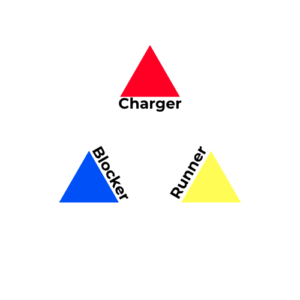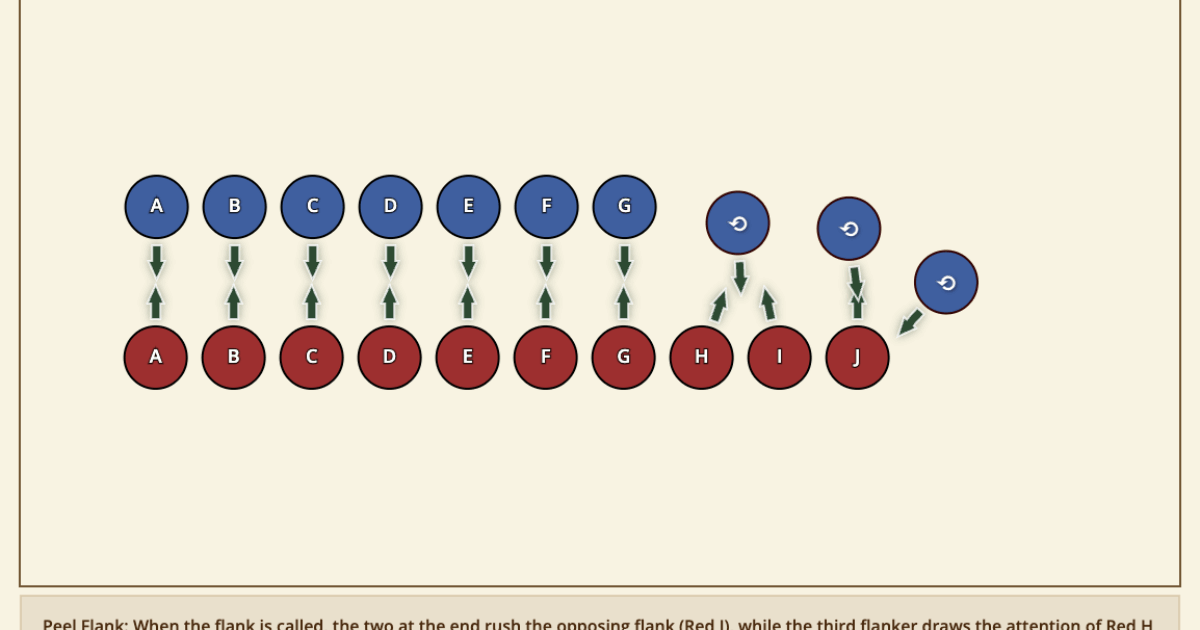My goal this entire season has been to study the Three Types of Fencers and specifically the Runner. It has been very enlightening as I’ve worked with others and studied on my own. But before I get into how color ties in with this theory, let me give a brief overview of where this theory came from.
The Original Myths behind these Types of Fighters
The idea of the different types of fighters originated in the Scola Metallorum Rapier Training Manual by Lord Randal The Malcontent (Randal Ames) back in 2002. The manual itself discussed many different things, but the Four Types of Fighters was a highlight of the manual. They determined that the four general types of fighters were the Charger, Blocker, Runner, and Shifter. Each type hinged around basic tendencies and amount of experience as a fighter. Here is how they described each style:
The Charger
“This is a fighter that is predominantly aggressive and seeks to end the conflict by their own means. These fighters tend to attack early and often without a lot of preliminaries. They are predominantly linear in their approach (the shortest distance etc). A Charger tends to have a few obvious “tells” or motions that signal the perceptive opponent their intentions (which are simple: get in there and kill).Chargers tend to be middle level fighters with limited experience and approximately 2-3 years “training”.”
The Blocker
“This is a fighter that is predominantly defensive. They seek to end the conflict by a wider variety of means than the Charger: When they are attacked, the Blocker does just that, block. They generally have a set pattern of counter attacks called “Riposte” in the greater fencing community. The Blocker tends to seek a rhythm of exchanges or “conversations of the blade”: Attack, block, riposte, reset, repeat. They also tend to be linear in their approach. They tend to use very little footwork, preferring to stand and fight. Blockers tend to be higher level fighters with as much as 5-7 years of experience.”
The Runner
“This is an elusive fighter. They have no idea how to end the conflict and are mostly reactionary. They tend to have neither a strong attack nor outstanding defense. They often make tentative or peripheral attacks on extended targets like arms and legs. When attacked they run away. When blocked, they run away. When looked at funny, they run away. Generally, the Runner has limited training and experience; 1-2 years at most.”
The Shifter
“This is the most difficult fighter to describe, until you meet one. They tend to fight as a runner at first, then shift to blocking or charging with no obvious pattern. They may attack strongly. They may stand and block or stay far away. They may leave the line of engagement and approach or retreat from their opponent at a variety of angles. They are difficult to describe and analyze because Shifters are actually thinking about the fight as it unfolds. Shifters tend to have a great deal of fencing experience (7-10 years).”
In this original analysis, it is clear that the Shifter is considered the best type of fighter while the Runner is considered the worst. I disagree with this for many reasons, but the primary reason is because I feel that the “Shifter” does not describe a type of fighter.
In my opinion, it describes a technique and an ability to implement the three styles effectively. If it is true that there is no such thing as a “Shifter” style, but merely a “fighter who shifts”, then it can be concluded there are only three types of fighters.
With that in mind, I don’t believe that any of the three types of fighters are better than one or the other. I believe that they are merely three different ways of approaching the art of fencing. But now that the general idea of the theory has been covered, let me explain how color comes into play.
The Primary Colors
In color theory, there are three primary colors: Red, Blue, and Yellow. These are considered primary colors because mixing these three colors in various combinations can get any other color, but no two colors can mix to get red, blue, or yellow. Since we’ve conclude that there are only three types of fighters, we can associate a type of fighter with each of the three colors. Chargers are Red. Blockers are Blue. Runners are Yellow.
The Secondary Colors
With the Primary Colors established, you can now mix them. If you mix any of the two primary colors in equal proportions you get what color theory calls secondary colors. These would be Purple, Orange, and Green. To continue applying these ideas to the Three Types of Fighters, this would be a fighter that exhibits 50% Charger traits and 50% Blocker traits, for example. But it isn’t very often that someone has a purely equal mix. Usually we get varying shades within a certain range, just like we get unique fighters who share similar qualities.
The Tertiary Colors
More often than not, one color is more dominant than another and that’s where Tertiary Colors come in. Instead of mixing equal portions of two primary colors, one color is more apparent giving us colors like Yellow-Green, Red-Orange, or Blue-Green. For the Theory of the Charger/Blocker/Runners each person has a Primary style and a Secondary style, but since they are rarely balanced equally you get a dominant style with a less-dominant undertone.
For example, a Charger Blocker would be someone who is primarily a Charger but has a Blocker undertone and therefore falls in the range between Purple and Red.
How Shifting Fits In
As I stated at the beginning, I don’t believe a Shifter is a type of fighter, but rather a technique that can be developed and utilized by anyone. Within this idea of color, shifting is simply shifting between colors. Moving from a blue-green as a Blocker Runner to a deeper purple as a Blocker Charger. The more colors you’re able to shift between the more effective you’ll be as a fighter at utilizing each of the three types of fighting.
My Final Comments
This metaphorical connection between color and the Three Types of Fighters is not meant to replace the theory of Chargers, Blockers, and Runners. Instead it’s just one of the ways to explain the theory and how it can apply to individual fighters in a more visual way. Additionally, as this theory becomes more well-defined and understood, the specifics of how each type actually fights will become more available to learn and implement. I would love to hear your thoughts and comments on this idea. Does it help you understand the concept more clearly or is it something that makes it more confusing? I hope it helps.





I would say I’m a runner charger.
That is a pretty accurate self assessment Della. Have you watched your videos on the YouTube channel? You had a two minute fight with another ‘runner.’ You sort of bounced off each other while you circled. It was fun to watch.
I really like being able to match the colors and make secondary and tertiary combinations. This helps the whole theory make more sense.